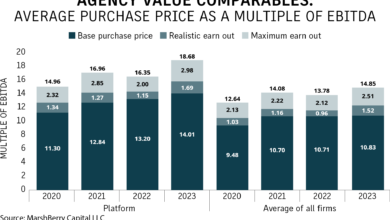TECH TUESDAY: Comments on SEC’s Proposed Ban on Exchange Volume Discounts for Brokers Reveal a Groundswell of Opposition

TECH TUESDAY is a weekly content series covering all aspects of capital markets technology. TECH TUESDAY is produced in collaboration with Nasdaq.
In October, regulators proposed banning exchange volume discounts for brokerages trading on behalf of customers — a reform SEC Chair Gary Gensler said would aid smaller brokers disadvantaged by higher trading fees.
But exchanges, investor advocacy groups, and even market makers whom the rule could benefit have pushed back on the proposal, saying it could erode market quality, interact with other proposed rule changes in unanticipated ways, and hurt the very firms and investors it purports to help.
‘Irrational’ Proposal
When regulators followed up their proposed US stock-trading overhaul with an October proposal to ban exchange volume discounts for agency trading, financial-regulation publication Capitol Account warned that early reactions to the rule foreshadowed “a nasty battle pitting the biggest Wall Street firms and the major exchanges against regional brokerages and investor advocates — with the SEC in the middle.”
So far, though, it’s not playing out that way. Instead, industry players and investor advocacy groups are all lining up on one side — with the SEC on the other.
The agency voted 3-2 along party lines to advance the plan in October, opening a 60-day comment window that closed on January 5. Aimed at leveling the playing field between larger brokers that qualify for the discounts and the smaller players that don’t, according to Mr. Gensler, the rule would still allow volume-based pricing tiers for proprietary trades in its current form.
Mr. Gensler says volume-based pricing poses a conflict of interest for brokers, since it could induce them to route orders to exchanges that don’t offer their users the best prices on trades.
But industry players have broadly refuted that characterization. In a detailed comment letter, Nasdaq, which relies on volume-based pricing to stimulate liquidity that lowers costs and improves outcomes for all investors, noted that brokers look primarily to other factors like execution quality to route orders.
Moreover, Nasdaq says, the SEC provides no data-backed analysis to support its claim, just as it omits empirical data on how the proposed ban would impact markets.
The critique has become a familiar refrain on Wall Street amid a slew of regulatory reforms proposed in parallel with what many industry participants fret is inadequate deliberation. With large brokers incurring significant infrastructure costs to navigate exchanges’ volume-based pricing, many industry participants feel the case for a ban should be ironclad before moving ahead.
Questions around regulators’ due diligence are of particular concern to Nasdaq, which has asserted that the proposal could dampen market liquidity, hamper price discovery, and widen spreads, raising costs and worsening outcomes for all US equity investors as brokers re-route order flow away from lit exchanges.
“Even a 5% reduction in agency and riskless principal order flow would increase Nasdaq’s spread by 1%,” the exchange’s comment letter read in part. “If all agency and riskless principal orders left Nasdaq, then the spread would widen by 85%.”
Curiously, the re-routing of orders to off-exchange venues that would almost certainly follow a volume-based pricing ban for agency trades is precisely the outcome the SEC’s broader US stock-trading overhaul aims to walk back. Ironically, the proposal leaves off-exchange venues’ volume-discount schedules untouched — dynamics Nasdaq called “irrational.”
Groundswell of Opposition
Nasdaq’s rival the New York Stock Exchange has yet to comment publicly on the proposed ban. Numerous other industry voices have spoken out against it, however.
In those reactions, uncertainty surrounding the proposal’s impacts is a central theme. Modern Markets Initiative, a trade group comprising market makers, asks the SEC in its own comment letter to retract the proposal despite its potential to drive order flow to market makers, citing a failure to “demonstrate through data that the problem is real and not conjecture” or “quantify the Proposal’s costs and benefits.”
Investor advocacy group Healthy Markets meanwhile pointed out that since smaller brokers often send their orders to larger rivals to piggy-back on the exchange discounts they receive, a volume-based pricing ban for agency trades could actually exacerbate inequality among brokers.
That defies the SEC’s primary rationale for a ban — namely, the contention that volume discounts disadvantage smaller brokers by forcing them to pay higher trading fees.
Even when larger brokers do capture exchange volume discounts, opponents of the proposal contend, they are not a competitive differentiator. Nasdaq points out that larger brokers “do not publicly tout their access” to volume discounts in marketing collateral, choosing instead to focus on differentiators like access to better technology and investment products, superior research, accessibility, and customer service.
Some trading firms worry the proposal casts too wide a net. A December comment letter from market maker Select Vantage argues the rule could ensnare many institutional customers whose traders direct their dealers to send their orders to a specific exchange — a scenario in which Select Vantage says no conflict exists, since dealers cannot reroute their orders. It asks the SEC to exempt customer-directed order flow as well as proprietary order flow from the rule.
Select Vantage also notes that because executing dealers often pass on a significant portion of exchange trading fees to their clients, institutional customers could see trading costs increase materially under the rule. That would likely prompt them to trade less, harming market liquidity.
Another nearly universal concern among opponents of a ban on exchange volume discounts for agency trading is the potential for the rule to interact in unanticipated ways with the series of proposals regulators made in December 2022 for overhauling US stock trading.
Several commenters questioned whether the proposed ban was redundant with the SEC’s proposal to strengthen brokers’ best-execution obligations. Others wondered how market participants could gauge a ban’s impacts while details of the broader proposed overhaul remain in flux.
‘Ubiquitous’ Practice
But while industry participants have zeroed in on the real-world challenges the proposed ban could pose for markets, those in the political realm have objected to the rule in principle.
Taking the unusual step of addressing a letter to the SEC Commission over a single rule change, Congressional Republicans voiced “deep concern” over the proposed ban.
“Volume-based discounts are not anomalies, but fundamental components found across various
sectors, fostering competition and enhancing consumer benefits,” they wrote. “In the securities markets, they play a similarly vital role, acting as key instruments in promoting liquidity. The move to prohibit these discounts undermines basic market dynamics and reveals a concerning misunderstanding of market operations.”
Nasdaq likewise called volume discounts “ubiquitous,” comparing them to discounted leases shopping-mall operators offer anchor tenants that play a bigger role in attracting shoppers.
Hester Peirce, one of the SEC’s two Republican commissioners who voted against the proposal, was even blunter.
“Economies of scale trigger discounts in almost every industry,” she said. “Why should similar discounts be unavailable in this industry?”
In a similar vein, some industry participants wondered whether the ban was a solution in search of a problem — a critique leveled at regulators with growing regularity as new rule proposals proliferate.
“We remain concerned that the SEC continues to propose wholesale changes to US equity market structure without identifying a market failure or evidence of repeated market harm,” Ellen Greene, a managing director at the Securities Industry and Financial Markets Association, told Bloomberg. “It is critical that regulators tailor their interventions to address a market failure without unnecessarily harming or disrupting markets.”
Market participants’ reservations around the proposed ban suggest it could see a major revision prior to adoption. Indeed, the proposal outlines several alternatives that Mr. Gensler has emphasized could be adopted instead. One such alternative is simply requiring exchanges to disclose more details of their volume-discount programs.
That step could help the SEC fill in the perceived gaps in the empirical analysis that serve as both a rationale for a revised proposal and a gauge of its likely impacts.
For Nasdaq, that outcome would reflect the measured approach that characterizes successful market-structure refinements.
“For many years, collaboration between regulators and industry has been instrumental in forging US equity markets into the world’s most efficient, robust, and transparent,” Nasdaq Head of Strategy for North American Markets Chuck Mack said.
“Protecting liquidity and price discovery around the NBBO is foundational to ensuring markets function optimally for all participants. Abandon those principles, and new regulation could end up hurting the very people it’s designed to help.”
Jason Dibble is Co-Founder and Editor in Chief at Curatia.
This column was originally published by Curatia LLC, a subscription-based news and analytics platform for traders and technologists. To sign up for a free trial of Curatia’s service, visit https://account.curatia.com/register.





